There are over 260 species of squirrels scurrying around the world, except Antarctica. These bushy-tailed rodents can be categorized into three main groups: tree squirrels, ground squirrels, and flying squirrels.
Tree squirrels, like the familiar gray squirrel, are acrobatic climbers. Ground squirrels, which include chipmunks and prairie dogs, dwell in burrows. Flying squirrels, though not capable of true flight, glide between branches using a furry membrane.
Let’s go on an adventure to discover the amazing world of squirrels together.
Common Squirrel Species
Eastern Gray Squirrel (Sciurus carolinensis)
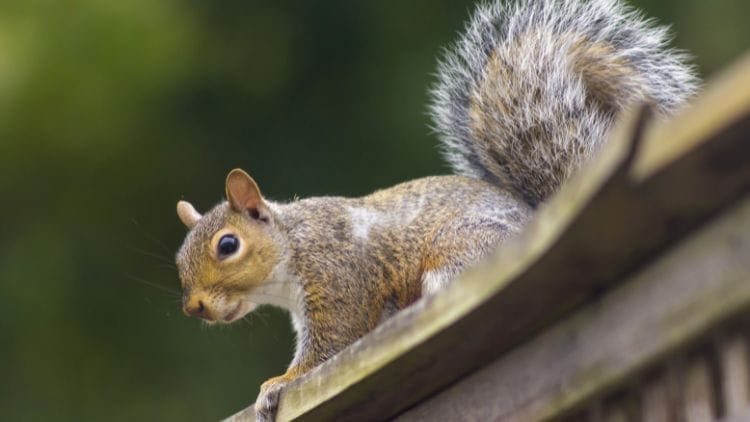
- Appearance: Typically gray in color with white underparts, although color variations exist.
- Habitat: Found in forests, urban parks, and residential areas throughout much of eastern North America.
- Behavior: Agile climbers and proficient jumpers; known for their habit of caching food in numerous locations.
- Interesting Fact: Can adapt well to urban environments and often become accustomed to humans, frequently raiding bird feeders.
American Red Squirrel (Tamiasciurus hudsonicus)
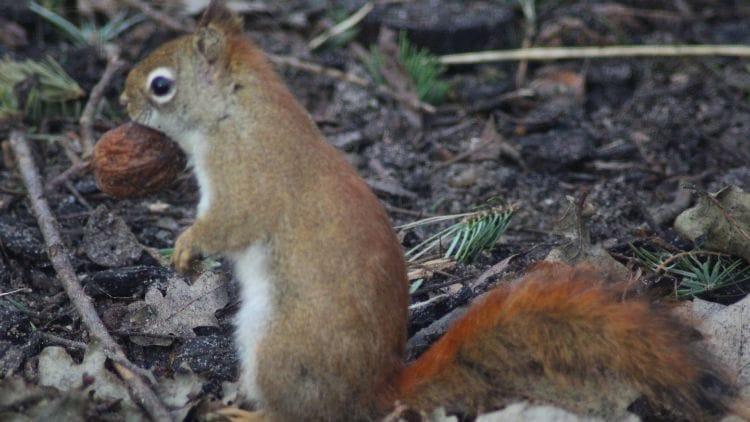
- Appearance: Smaller than the Eastern Gray Squirrel, with a reddish coat and white underparts.
- Habitat: Prefers coniferous forests across North America, from Alaska to the northeastern United States.
- Behavior: Highly territorial and vocal, with a distinctive chattering call; known for their energetic behavior.
- Interesting Fact: Often observed cutting and caching pine cones to store food for the winter.
Fox Squirrel (Sciurus niger)
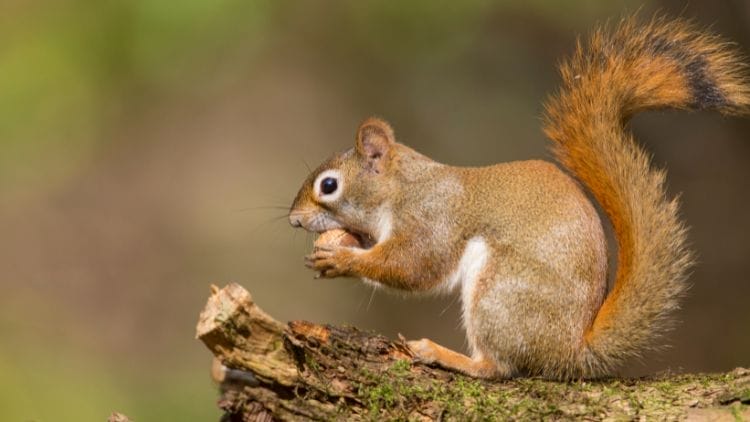
- Appearance: Larger than other squirrel species, with a rust-colored coat and bushy tail.
- Habitat: Found in woodlands, parks, and suburban areas throughout much of North America.
- Behavior: Often seen foraging on the ground for nuts, seeds, and fruits; skilled climbers and adept at jumping between trees.
- Interesting Fact: May build multiple nests called “dreys” within their territory, using leaves and twigs.
Douglas Squirrel (Tamiasciurus douglasi)
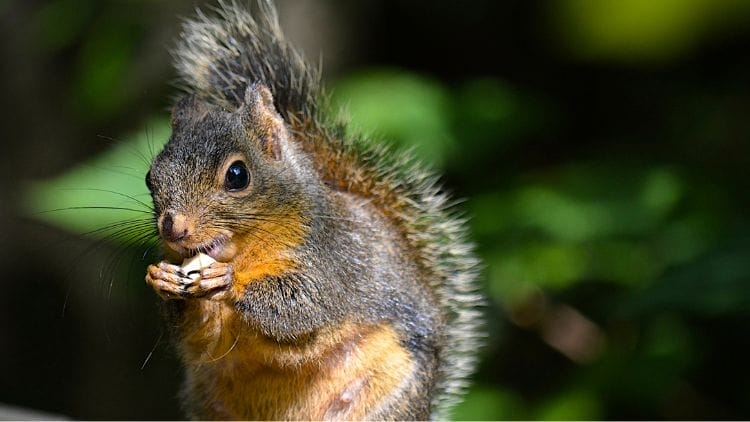
- Appearance: Similar in size to the American Red Squirrel, with a brownish-gray coat and white underparts.
- Habitat: Native to western North America, particularly coniferous forests along the Pacific coast.
- Behavior: Energetic and territorial; known for their vocalizations and frequent chatter.
- Interesting Fact: Have a fondness for pine cones and are often observed feeding on seeds from various coniferous trees.
Ground Squirrel (Family: Sciuridae, various species)

- Appearance: Varies depending on the species, but generally smaller and more compact than tree squirrels.
- Habitat: Found in a range of habitats, including grasslands, deserts, and rocky areas.
- Behavior: Primarily ground-dwelling, with extensive burrow systems for shelter and protection.
- Interesting Fact: Many ground squirrel species are social animals, living in colonies and exhibiting complex social behaviors.
Uncommon Squirrel Species
Eurasian Red Squirrel

- Appearance: Eurasian red squirrels typically have reddish-brown fur on their backs with white or cream-colored underbellies. They have long bushy tails and tufted ears.
- Habitat: Found across Europe and parts of Asia, Eurasian red squirrels inhabit a variety of forested areas, including coniferous and deciduous forests.
- Behavior: These squirrels are arboreal, spending much of their time in trees. They are known for their agility and ability to leap between branches. They primarily feed on seeds, nuts, fruits, and fungi.
- Interesting Facts: Eurasian red squirrels are known for their dominance in certain habitats over the larger gray squirrels. They are also famous for their role in the declining populations in the UK due to competition with the introduced gray squirrel species.
Northern Flying Squirrel (Glaucomys sabrinus)
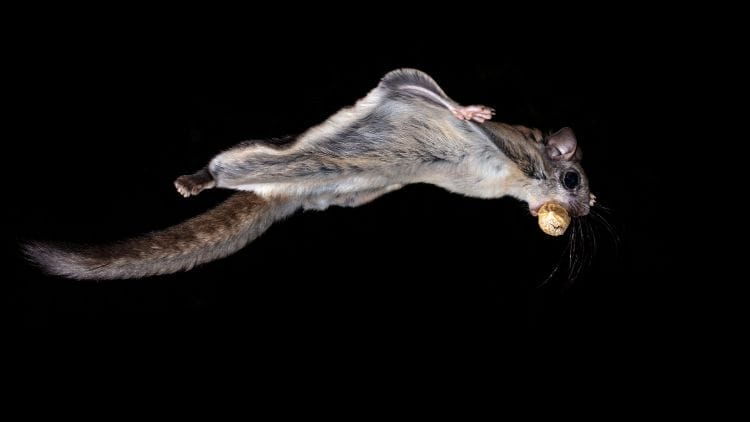
- Appearance: Northern flying squirrels have soft, dense fur that is gray-brown on their backs and white or cream-colored on their undersides. They have large eyes and a flattened tail.
- Habitat: Found in boreal forests across North America, northern flying squirrels are nocturnal creatures that nest in tree cavities or build leaf nests in the branches.
- Behavior: Despite their name, these squirrels do not fly but rather glide using a patagium, a membrane that extends from their wrists to their ankles. They are social animals and often live in small family groups.
- Interesting Facts: Northern flying squirrels have highly developed night vision to aid in their nocturnal activities. They are known to engage in communal nesting during cold weather to conserve body heat.
Southern Flying Squirrel (Glaucomys volans)
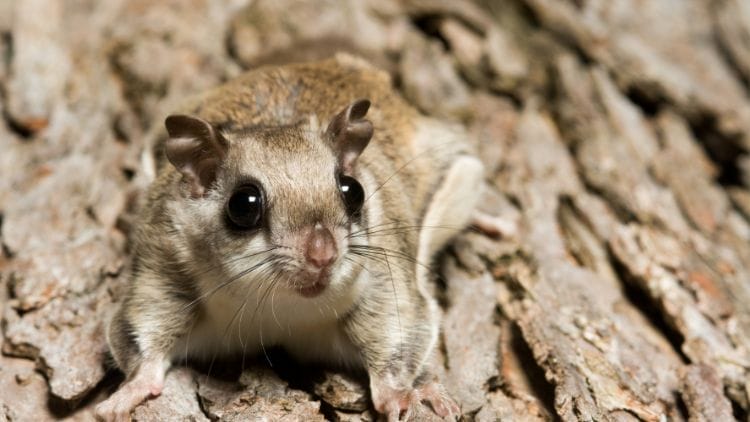
- Appearance: Southern flying squirrels have soft, grayish-brown fur with white underbellies. They have large eyes and a flattened tail similar to the northern flying squirrel.
- Habitat: Found in deciduous and mixed forests across eastern North America, southern flying squirrels are nocturnal and prefer habitats with plenty of trees for gliding.
- Behavior: Like their northern counterparts, southern flying squirrels glide using a patagium. They are social animals and often share communal nests with multiple individuals.
- Interesting Facts: Southern flying squirrels are known for their acrobatic gliding abilities, which can cover distances of up to 150 feet (45 meters). They have been observed gliding from tree to tree or even from trees to the ground.
Threats to Squirrel Populations
Squirrel populations face various threats, including:
Habitat Loss:
Deforestation, urbanization, and agricultural expansion result in the destruction and fragmentation of squirrel habitats limiting their available living space and resources.
Invasive Species: Invasive species, such as the gray squirrel in the UK and parts of Europe, outcompete native squirrel species for food and habitat, leading to declines in native populations.
Climate Change:
Climate change alters squirrel habitats, disrupts food availability, and affects hibernation patterns, making it challenging for squirrels to adapt to changing environmental conditions.
Human Activities: Human activities like hunting, trapping, road accidents, and pollution pose direct threats to squirrel populations, causing injury, mortality, and habitat disturbance.
Disease:
Squirrels are susceptible to various diseases, including squirrel pox virus, which is carried by gray squirrels and can be fatal to red squirrels.
Conservation Initiatives
Conservation efforts aimed at protecting squirrel populations include:
Habitat Conservation:
Establishing protected areas, wildlife corridors, and habitat restoration projects to preserve and expand suitable squirrel habitats, ensuring they have access to food, shelter, and breeding sites.
Invasive Species Management:
Implementing control measures to manage invasive species populations, such as gray squirrel control programs in regions where they threaten native squirrel species.
Climate Change Adaptation:
Developing strategies to help squirrels adapt to changing environmental conditions, including habitat management practices that enhance resilience and promote genetic diversity.
Community Engagement: Educating local communities about the importance of squirrel conservation, encouraging responsible land use practices, and fostering public support for conservation initiatives.
Research and Monitoring:
Conduct research on squirrel populations to understand their ecology, behavior, and population dynamics, as well as monitor population trends and identify conservation priorities.
Legislation and Policy:
Enacting laws and regulations to protect squirrels and their habitats, including habitat conservation laws, hunting regulations, and wildlife management policies.
Conclusion,
Squirrel populations face a myriad of threats ranging from habitat loss and invasive species to climate change and human activities. However, concerted conservation efforts are underway to protect these charismatic creatures and ensure their survival for future generations.
By focusing on habitat conservation, invasive species management, climate change adaptation, community engagement, research, monitoring, and legislative measures, we can mitigate the threats facing squirrel populations and promote their well-being.
We must recognize the importance of squirrels within their ecosystems as seed dispersers, prey species, and indicators of environmental health. Through collaborative action and ongoing dedication to squirrel conservation, we can strive to maintain healthy squirrel populations and preserve biodiversity worldwide.
Importance of Squirrels in the Ecosystem
Squirrels play crucial roles in ecosystems, primarily through seed dispersal, forest regeneration, and serving as prey for predators.
Their burying behavior helps disperse seeds, promoting plant growth and biodiversity. As prey, they support predator populations, maintaining ecosystem balance.
Additionally, squirrels aerate soil through burrowing, improve nutrient cycling, and indirectly control insect populations. Monitoring squirrel populations can provide insights into habitat quality and overall ecosystem health.
Protecting squirrels and their habitats is essential for maintaining biodiversity and ecosystem stability.
Fascination with Squirrels
Squirrels captivate human interest with their charming antics and diverse characteristics. Embedded in cultural symbolism, they feature prominently in folklore, literature, and art, portraying them as clever and agile creatures.
In urban landscapes, squirrels thrive, entertaining onlookers with their playful behavior, a phenomenon amplified by social media and memes.
Feeding and observing squirrels in natural habitats or backyard settings provide both relaxation and educational opportunities, particularly for children.
Their photogenic qualities make them popular subjects in photography and art, while their role as seed dispersers underscores their ecological importance. Citizen science initiatives further engage enthusiasts in monitoring squirrel populations, fostering a deeper connection between people and wildlife.
Thus, the fascination with squirrels encompasses cultural allure, entertainment value, and appreciation for their ecological contributions, making them enduring symbols of nature’s charm.
FAQ
What are the most common squirrels?
The most common squirrels are the eastern gray squirrel (Sciurus carolinensis) and the eastern fox squirrel (Sciurus niger) in North America and the Eurasian red squirrel (Sciurus vulgaris) in Europe and Asia.
How many species of squirrels are there?
There are over 200 species of squirrels worldwide, belonging to the family Sciuridae.
What is the rarest type of squirrel?
The rarest type of squirrel may vary depending on location and conservation status. For example, the Delmarva fox squirrel (Sciurus niger cinereus) is considered rare and is listed as threatened in the United States.
What is the biggest killer of squirrels?
Natural predators such as hawks, owls, snakes, and domestic cats are significant threats to squirrels. However, habitat loss and human activities also pose significant risks to squirrel populations.
What is the biggest squirrel?
The Indian giant squirrel (Ratufa indica) holds the title for the largest species of squirrel. It can grow up to 3 feet (nearly 1 meter) in length.
Do squirrels have 4 legs?
Yes, squirrels, like most mammals, have four legs.
Can squirrels eat meat?
Squirrels are primarily herbivores, but they may occasionally eat insects, bird eggs, or even small vertebrates. However, meat is not a significant part of their diet.
Are squirrels intelligent?
Squirrels demonstrate problem-solving abilities and adaptability in various environments, suggesting a degree of intelligence.
Are squirrels attacking humans?
Squirrels generally avoid humans and are not known for attacking them. However, like any wild animal, they may defend themselves if they feel threatened or cornered.
Who eats squirrels?
Predators such as birds of prey (e.g., hawks, owls), snakes, carnivorous mammals, and some larger birds like crows and ravens prey on squirrels.
What is the smallest squirrel in the world?
The African pygmy squirrel (Myosciurus pumilio) holds the title for the smallest squirrel species. It is native to western Central Africa.
Why are squirrels called squirrels?
The origin of the word “squirrel” is uncertain, but it may have come from the Greek word “skiouros,” which means shadow-tailed.
What is a male squirrel called?
A male squirrel is simply called a squirrel. There isn’t a specific term used exclusively for male squirrels.
Where do squirrels sleep?
Squirrels often build nests, called dreys, high up in trees using leaves, twigs, and other materials. They may also seek shelter in tree cavities or dens to sleep and rest.


You May Also Read